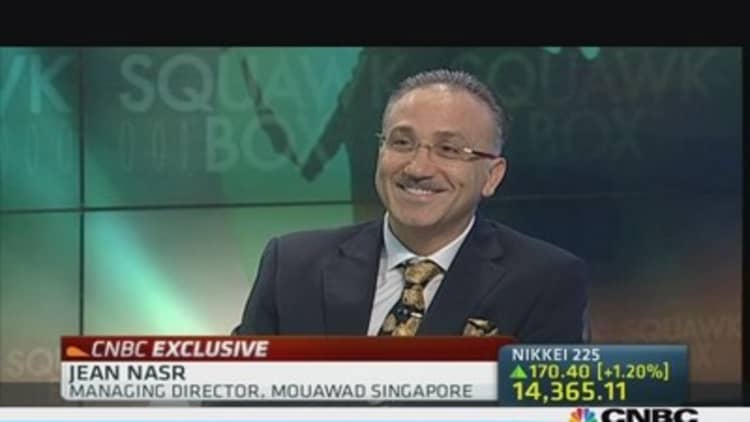With a price tag of $55 million and an internally flawless yellow diamond weighing over 407-karat, the world's most valuable necklace is expected to test demand for ultra-high-end jewelry in Asia.
Created by Switzerland-based luxury jeweler Mouawad, the diamond necklace named L'incomparable, is currently being exhibited at a jewelry show in the wealthy Southeast Asian city-state of Singapore, the region's retail hub and home to a surging millionaire population. First displayed in Qatar earlier this year, Singapore is the second location that L'incomparable has been displayed.
"Asia continues to boom in comparison to other regions worldwide. There's a lot of money that's available, there's a lot of interest in acquiring investment stones," Jean Nasr, managing director of Mouawad told CNBC.
(Read more: Russians in $200K bar tab battle or 'receipt porn?')
Since going on display last Thursday, two individuals have expressed serious interest in purchasing the piece, a multi-billionaire business tycoon from China and another from Russia, said Nasr.
"They are very big, powerful people that can afford something like this. It's about an investment, statement, glory and being able to have a part of history, something that nobody else has," he said, declining to provide further details on the potential buyers who are currently in the discussion phase.
Such a purchase, however, is unlikely to be completed at a public exhibition hall in Singapore, he noted. "There will be follow up privately under certain security."

Making a statement
Mouawad is one of hundreds of international jewelry manufactures present in Singapore this week to tap the region's growing demand for fine jewelry. The city is currently playing host to two major jewelry shows, featuring about 340 exhibitors from around the world.
According to industry experts, Asian consumer preferences have changed dramatically in the past decade, with buyers looking increasingly beyond classic diamond jewelry to other precious stones.
"In recent years, the demand for exotic stones has grown, and the rocks are also getting bigger and bigger," said Kean Ng, chairman of Singapore JewelFest, referring to precious stones such as tanzanite, blue topaz.
(Read more: Slowdown not stopping Australia's millionaire factory)
"Today Asian consumers want a statement piece they can show off. This market has matured a lot," Ng added.
New York-based jeweler Essex Global Trading, which was showcasing the world's largest deep green diamond at 8.76 carats set in a platinum and gold ring for a price of $4 million, said Asian consumers have a greater appreciation for colored diamonds than buyers in the U.S.
"[Asian consumers] are a lot more educated than U.S. clientele; people in Asia want better quality when it comes to stones," said Lawrence Paul, manager of Essex Global Trading at the Singapore Jewellery & Gem Fair.
In addition, Ronny Levy, owner of Period Jewels, a California-based company specializing in antique jewelry, says there has also been a significant shift in attitudes towards antique jewelry in the recent years.
(Read more: China is minting billionaires at an astonishing pace)
"Twelve or thirteen years ago, antique jewelry was considered unlucky with Asian community, especially Chinese, but there has been a shift because of the generation change and the younger generation is definitely more interested in the antique jewelry," said Levy.
"It's being appreciated for its history and value. If you buy a Burma ruby inside a ring from the 1920s, you're likely to buy it at 40 percent cheaper than if you went to regular shop buying a loose stone," he said, noting that most of interest from Asia has come from customers in China, Indonesia, the Philippines and India.


